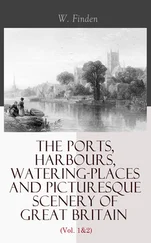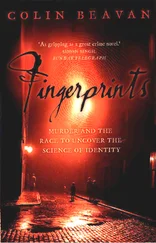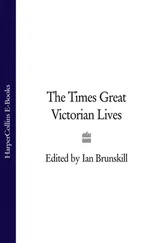of April 1860 reported that conditions in the court were bad in winter, abominable in summer. Magistrates had been trying to secure new premises since the 1840s. Details of courtroom from
Oliver Twist
(1838) by Charles Dickens and
Survey of London Volume 36
(1970), general editor F.H.W. Sheppard.
229
Wagner was a well-known figure. . . danger to the English Church.
See
Wagner of Brighton: The Centenary Book of St Paul's Church, Brighton
(1949) by H. Hamilton Maughan and
Aubrey Beardsley: A Biography (1999)
by Matthew Sturgis.
231
In the course of this examination . . . summoned from Scotland
Yard. Dolly Williamson had married since his return from Road, and now had a daughter, Emma, aged two. Durkin had been in charge of a notorious case of July 18 61 that inspired one of the essays in William Makepeace Thackeray's
Roundabout Papers.
A money-lender in Northumberland Street, off the Strand, had opened fire on a new client, Major William Murray of the 10th Hussars, a veteran of the Crimea. Murray fought back and eventually killed his assailant by smashing him over the head with a bottle. It emerged that the money-lender's rage sprang from a secret obsession with Murray's wife.
'After this,' wrote Thackeray, 'what is the use of being squeamish about the probabilities and possibilities in the writing of fiction? . . . After this, what is not possible? It is possible Hungerford Market is mined, and will explode some day.' The eruption of irrational violence could arouse excitement, wonder, even awe - the safety of the world was suddenly blown apart and anything at all could follow. The Northumberland Street crime, which also features in
The Moonstone,
is one of the cases explored in
Deadly Encounters: Two Victorian Sensations
(1986) by Richard D. Altick.
232
(John Foley had died . . . aged sixty-nine).
His death certificate states that he died of a hydrothorax at St George's Terrace, Trowbridge, on 5 September 1864.
233
'angel in the house'.
The term is from a poem published by Coventry Patmore in 1854, which describes the self-sacrificial purity and devotion of his wife, Emily.
233
'Constance Kent, it is said . . . other agency than their own.'
In
The Times, 26
April 1865. The
Bath Express
was similarly cynical about women's instincts. It argued on 29 April that this crime had a 'finesse of cruelty' of which only a woman was capable. The
Saturday Review
said it hoped that Constance was a 'psychological monster' rather than the embodiment of female adolescence. For attitudes to female killers, see
Twisting in the Wind: The Murderess and the English Press
(1998) by Judith Knelman.
235
Detective-Inspector Tanner . . . a week at a time.
Tanner retired from the force due to ill-health in 1869 and opened a hotel in Winchester. He died in 1873, aged forty-two. See
Dreadful Deeds and Awful Murders: Scotland Yard's First Detectives
(1990) by Joan Lock.
241
The Reverend James Davies . . . very wicked young woman.'
From
The Case of Constance Kent, viewed in the Light of the Holy Catholic Church
(1865) by James Davies and
The Case of Constance Kent, viewed in the Light of the Confessional
(1865) by Edwin Paxton Hood.
242
James Redding Ware reprinted his pamphlet . . . death of her brother.'
From
The Road Murder: Analysis of this Persistent Mystery, Published in 1862, Now Reprinted, with Further Remarks
(1865) by J.R. Ware. The 1862 pamphlet was also published as a short story in Andrew Forrester's
The Female Detective
(1864) - 'Forrester' was a pseudonym, probably an allusion to a family firm of private inquiry agents based in the City of London.
243
From her cell . . . undeceived on this point.'
Rodway passed the statement on to the press, and it appeared in several newspapers that summer.
244
Children, he wrote elsewhere . . . the figure of the child.
See
Embodied Selves: An Anthology of Psychological Texts 1830-1890
(1998), edited by Jenny Bourne Taylor and Sally Shuttleworth. 'The moral lesson to be learned is the existence of evil passions in the breasts of even young children,' said the
Medical Times and Gazette
on 22 July 1865 - quoted in
Victorian Murderesses: A True History of Thirteen Respectable French and English Women Accused of Unspeakable Crimes (1977)
by Mary S. Hartman.
244
Later, Bucknill told the Home Secretary . . . her father and brother.
From a letter of 30 August 1865 in HO 1144/20/49113.
244
Rodway explained Constance's rationale . . . urged on her behalf.'
From a letter in HO 1144/20/49113.
CHAPTER 17
248
John Duke Coleridge . . . getting up my speech.'
Coleridge earned more than PS4,000 a year, according to the
Dictionary of National Biography.
Diary extract from
Life and Correspondence of John Duke, Lord Coleridge
(1904).
248
He composed a letter . . . my conviction.'
Correspondence in Bernard Taylor's archive.
251
As soon as the death sentence was passed. . . A maiden die on the fatal tree.'
Broadside ballads, in order of quotation: 'The Road Hill Murder Confession of the Murderess', published by Disley, 1865; unnamed ballad quoted in the
North Wilts Herald
of 1 o September 1865; 'Trial and Sentence of Constance Kent', also printed by Disley, 1865, and reprinted in Charles Hindley's
Curiosities of Street Literature (1966).
See Roly Brown's article on Constance Kent and the Road Murder, no. 15 in his series on the nineteenth-century broadside ballad trade in
Musical Traditions
magazine (mustrad.org.uk).
252
A Devonshire magistrate . . . lunacy in the 1840s.
See affidavit from Gustavus Smith, dated 24 July 1865, in HO 1144/20/49113.
253
On the morning of Thursday . . . slightest emotion.'
Pritchard was hanged on Friday.
253
(in fact, Willes had decided . . . passed in confession').
Letter from Coleridge to W.E. Gladstone, 6 April 1890, quoted in
Saint - with Red Hands?
(1954) by Yseult Bridges.
258
Bucknill finished his letter . . . could succumb to insanity.
In a lecture on 'Insanity in its Legal Relations' delivered before the Royal College of Physicians thirteen years later - in April 1878 - Bucknill said more about Constance's motive. The girl had stored up a 'fund of rage and revengeful feeling' against her 'high-spirited' stepmother, on account of the disparaging comments the second Mrs Kent made about Constance's 'partially demented' mother. Constance tried to run away from the stepmother's 'hated presence', but when she was caught and brought home resolved to take vengeance. She thought poison would be 'no real punishment' and decided instead to kill Saville. 'A dreadful story this,' remarked Bucknill, 'but who can fail to pity the depths of house-hold misery which it denotes?' Quoted in
Celebrated Crimes and Criminals
(1890) by Willoughby Maycock.
259
Forty years later . . . at every pore.'
From 'Fragment of an Analysis of a Case of Hysteria' (1905) in
The Standard Edition of the Complete Psychological Works of Sigmund Freud
Читать дальше












